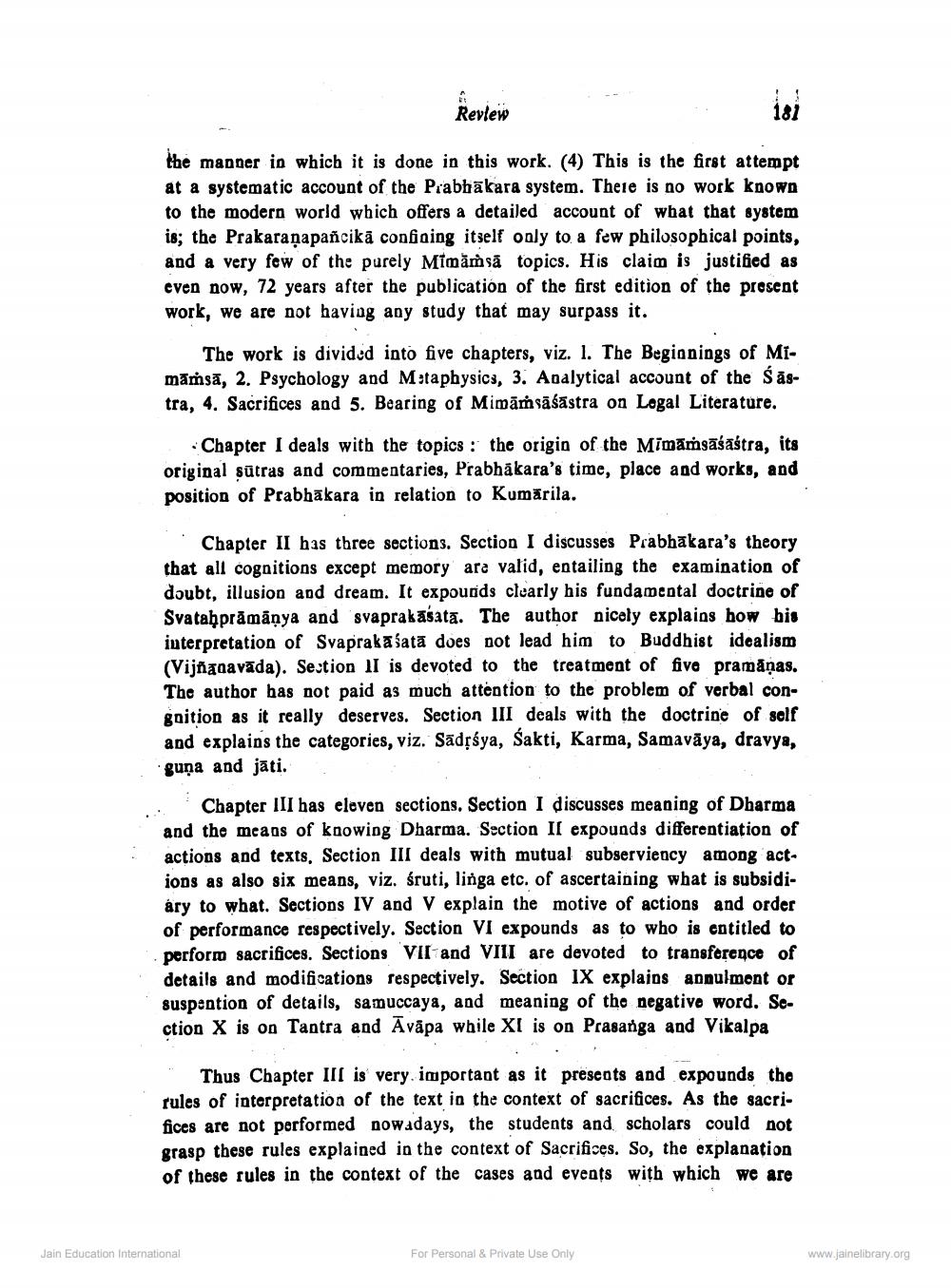________________
Review
the manner in which it is done in this work. (4) This is the first attempt at a systematic account of the Prabhakara system. There is no work known to the modern world which offers a detailed account of what that system is; the Prakaraṇapañcika confining itself only to a few philosophical points, and a very few of the purely Mimämsä topics. His claim is justified as even now, 72 years after the publication of the first edition of the present work, we are not having any study that may surpass it.
181
The work is divided into five chapters, viz. 1. The Beginnings of MImämsä, 2. Psychology and Metaphysics, 3. Analytical account of the Sastra, 4. Sacrifices and 5. Bearing of Mimämsäsästra on Legal Literature.
Chapter I deals with the topics: the origin of the Mimämsäsastra, its original sutras and commentaries, Prabhakara's time, place and works, and position of Prabhakara in relation to Kumaila.
Chapter II has three sections. Section I discusses Prabhakara's theory. that all cognitions except memory are valid, entailing the examination of doubt, illusion and dream. It expounds clearly his fundamental doctrine of Svataḥprämanya and svaprakasata. The author nicely explains how his interpretation of Svaprakalata does not lead him to Buddhist idealism (Vijnanavāda). Section II is devoted to the treatment of five pramāņas. The author has not paid as much attention to the problem of verbal congnition as it really deserves. Section III deals with the doctrine of self and explains the categories, viz. Sadréya, Sakti, Karma, Samavaya, dravya, guna and jati.
Chapter III has eleven sections. Section I discusses meaning of Dharma and the means of knowing Dharma. Section II expounds differentiation of actions and texts, Section III deals with mutual subserviency among actions as also six means, viz. śruti, linga etc. of ascertaining what is subsidiary to what. Sections IV and V explain the motive of actions and order of performance respectively. Section VI expounds as to who is entitled to perform sacrifices. Sections VII and VIII are devoted to transference of details and modifications respectively. Section IX explains annulment or suspention of details, samuccaya, and meaning of the negative word. Section X is on Tantra and Avapa while XI is on Prasanga and Vikalpa
Jain Education International
Thus Chapter III is very important as it presents and expounds the rules of interpretation of the text in the context of sacrifices. As the sacrifices are not performed nowadays, the students and scholars could not grasp these rules explained in the context of Sacrifices. So, the explanation of these rules in the context of the cases and events with which we are
For Personal & Private Use Only
www.jainelibrary.org




